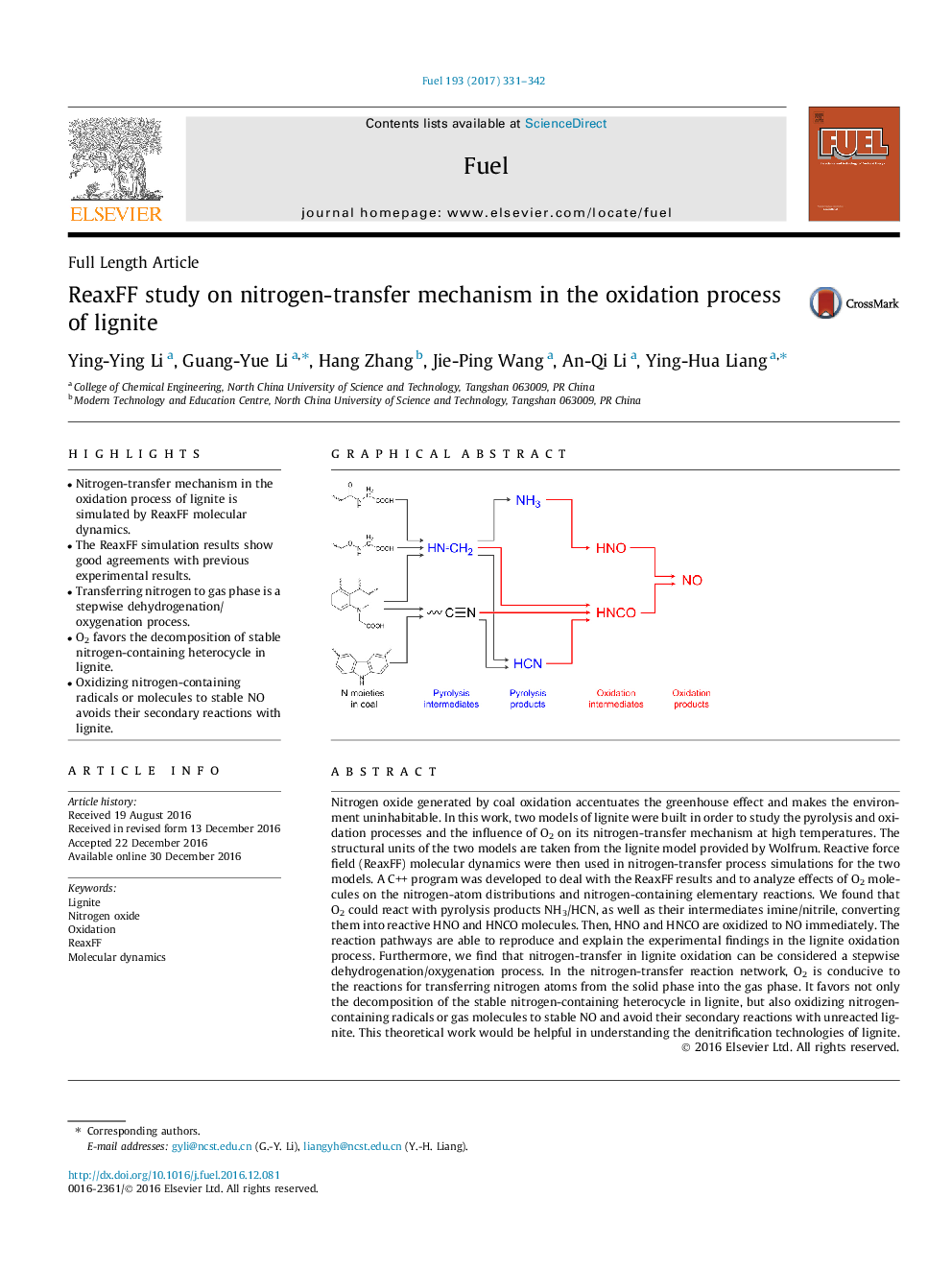| Article ID | Journal | Published Year | Pages | File Type |
|---|---|---|---|---|
| 6474958 | Fuel | 2017 | 12 Pages |
â¢Nitrogen-transfer mechanism in the oxidation process of lignite is simulated by ReaxFF molecular dynamics.â¢The ReaxFF simulation results show good agreements with previous experimental results.â¢Transferring nitrogen to gas phase is a stepwise dehydrogenation/oxygenation process.â¢O2 favors the decomposition of stable nitrogen-containing heterocycle in lignite.â¢Oxidizing nitrogen-containing radicals or molecules to stable NO avoids their secondary reactions with lignite.
Nitrogen oxide generated by coal oxidation accentuates the greenhouse effect and makes the environment uninhabitable. In this work, two models of lignite were built in order to study the pyrolysis and oxidation processes and the influence of O2 on its nitrogen-transfer mechanism at high temperatures. The structural units of the two models are taken from the lignite model provided by Wolfrum. Reactive force field (ReaxFF) molecular dynamics were then used in nitrogen-transfer process simulations for the two models. A C++ program was developed to deal with the ReaxFF results and to analyze effects of O2 molecules on the nitrogen-atom distributions and nitrogen-containing elementary reactions. We found that O2 could react with pyrolysis products NH3/HCN, as well as their intermediates imine/nitrile, converting them into reactive HNO and HNCO molecules. Then, HNO and HNCO are oxidized to NO immediately. The reaction pathways are able to reproduce and explain the experimental findings in the lignite oxidation process. Furthermore, we find that nitrogen-transfer in lignite oxidation can be considered a stepwise dehydrogenation/oxygenation process. In the nitrogen-transfer reaction network, O2 is conducive to the reactions for transferring nitrogen atoms from the solid phase into the gas phase. It favors not only the decomposition of the stable nitrogen-containing heterocycle in lignite, but also oxidizing nitrogen-containing radicals or gas molecules to stable NO and avoid their secondary reactions with unreacted lignite. This theoretical work would be helpful in understanding the denitrification technologies of lignite.
Graphical abstractDownload high-res image (101KB)Download full-size image
